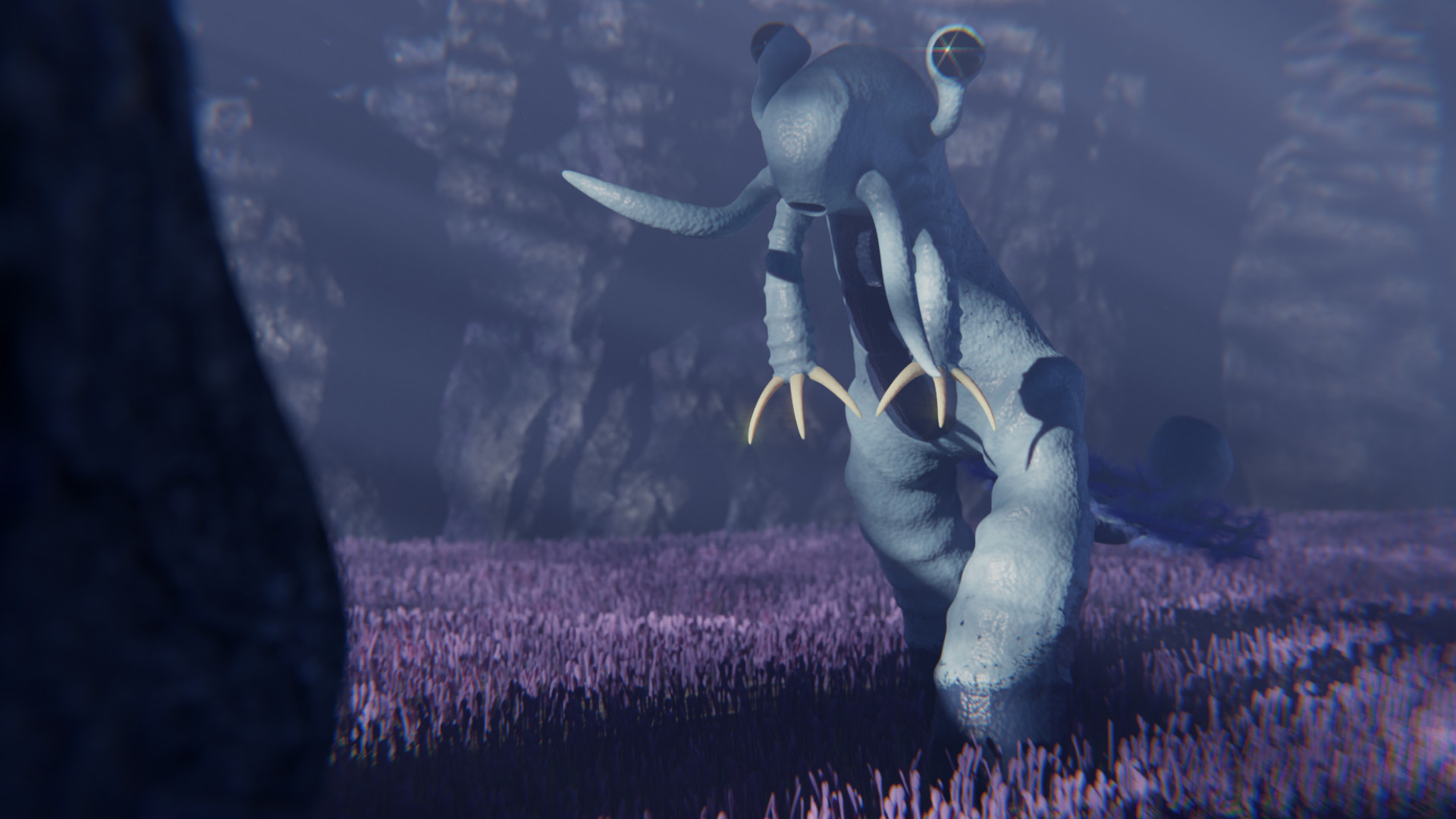Boped
These bipedal megafaulnal browsers vaguely resemble humans, though their intelligence is more akin to a goldfish at the very most. [Creature design by Random Evo times]
Basic Information
Anatomy
Bobpeds stand bipedally to get at the highest floral life around without the luxury of a neck. They also can use their tendrils to get at food, but they are able to retract them to protect them from damage. This allows them to grow to megafaunal sizes and compete with nektonic herbivores, as well as protect themselves from most predators through shear size. Their Legs are covered in “hooves” of dead skin like other herbivores at the time to protect their feet from hazards, however with only two legs armoring them with hooves is a lot easier. They also possess a tail club made of dead skin on the end of the tail able to withstand high forces when used to smack predators and simple camera eyes that contain two types of cone cell one that is most active with short wavelengths of visible light, the other is more active at longer wavelengths, so they are able to distinguish between purple and blue forage and mates, from the longer wavelength emitting predators. While their bobber ancestors lacked the claws typical of pseudotetrapods, this is due to a broken promotor. In this line the promotor was reactivated, and as a result the forelimbs carry claws that allow bopeds to defend themselves from those predators large enough to threaten them.
Genetics and Reproduction
When the mating season comes around groups of males coordinate to swarm around females, each male takes his turn displaying to the female, waving their purple arms colored by their diet up and down, after this is over the female picks her favorite male out of the bunch and they mate, with the other males leaving to search for another female they can mate with. Female lays her internally fertilized eggs in a tiny hole in the ground she has dug, and then promptly abandons the eggs to mate again. The juveniles are quite precocial and they climb up the tall retinalpytes the adults feed from and begin munching on the leaves for 5 local years, to which they reach full size and mate for the upcoming mating seasons.
Ecology and Habitats
They live in warm shallow waters like a lot of species at this time, that means the Yama Natash Major Reef System, or Y.N.M.R.S for short, is a place you’d find a lot of bobpeds.
Biological Cycle
Most of their diet is tall retinalpytes, although floating photosynthesizers are not off the table for them and occasional terrestrial plant runoff or ground flora wouldn’t hurt them if they eat it.
EXTINCT
Genetic Ancestor(s)
Scientific Name
Dipodus dendrovorus
Origin/Ancestry
Pseudotetrapoda
Lifespan
12 local years
Average Height
female 375 cm, male 325 cm
Body Tint, Colouring and Marking
Males have purple tinted forelimbs that are colored by retinal from their diet being deposited in the dermal cells of those limbs. Females lack this feature.
Geographic Distribution
Remove these ads. Join the Worldbuilders Guild











Comments